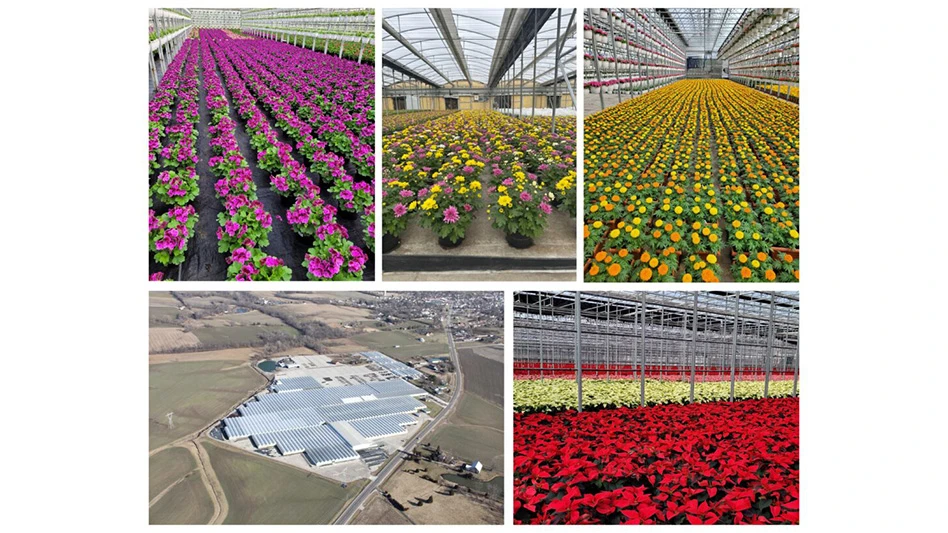We hear and read daily about businesses working to be more environmentally aware and that modify practices to be more ecologically sound. Environmental sustainability has quickly come into our circle of concern on many fronts.
{sidebar id=51}
Know your key financial numbers
There is another “green” concern arising at the same time as environmental sustainability. Most businesses today need to not only be environmentally responsible, but they also need to evaluate their financial sustainability.
Wildfires in
Financial sustainability can be likened to personal health. It’s like knowing your vital numbers (blood pressure and cholesterol level) and making an effort to keep things healthy. I’m encouraging you to know your key financial numbers or you could be headed for major financial problems.
Cash flow
Financial sustainability is more than cash flow. It is the financial effects that decisions have or business practices create.
For producers, improving cash flow may mean asking suppliers for extended terms on purchases, which can stretch the financial capabilities of the supplier but often can be a deal-breaker. In some smaller businesses, cash flow may be subsidized by high-interest debt, and that high interest rate can be debilitating if not paid back quickly. If you haven’t examined your company’s cash flow lately, now might be a very good time to evaluate your plan for covering cash shortfalls and short-term debt.
It begins with knowledge
Financial sustainability begins with knowledge. We need to know key numbers like sales, gross margin, cost of goods sold, overhead or indirect costs and net profit margin. I’ve encouraged you before to use the DuPont Strategic Profitability Model (SPM), which incorporates all of these key financial numbers in one strategic tool. Anyone can take the income statement and balance sheet supplied by their financial adviser or accountant and plug in the numbers.
In addition to knowing these numbers, you might also have a good idea of your gross margin and net profit dollars. Bills are paid in dollars, not in percentage points. Have an understanding of the gross and net profit dollars and percentages and their recent history or trends in your company.
Asset management
Another aspect of financial sustainability is to have a reasonable understanding of your asset management. What is your asset turnover (also figured in the SPM), which is the ratio of sales:assets or how effective your company is at turning assets into sales. A high asset turnover is better. This number should be much higher for service businesses. Low asset turnover may be an indication your company is too heavy with assets to be lean and efficient in producing sales with them.
With the emphasis on lean business practices, I see more operations opting to lease or rent not just equipment but entire facilities. It’s making more sense to lease simply to reduce the risk associated with the future.
I recently heard one of our
Dealing with debt
Another key to financial sustainability is your debt or lack of debt. Not all debt is bad. Much depends on how your business manages debt.
Good debt enables a business to grow and expand when it can’t afford to do so internally. Often, my students get the idea that debt is inherently bad. Not so. There are times when a business needs to make decisions it believes are in the long-term interest of the company, but ones that it can’t afford to do on its own. It is the conservative but aggressive plan to retire the debt that should accompany taking on new debt.
Is debt used to fund recurring items like payroll or is it used to fund a new asset or refurbishing an existing one? Debt for asset development can be helpful. Debt for recurring expenses is rarely good. It’s a tool to be helpful, not a master to be feared.
Customer base
Financial sustainability also implies that you have a broad and diverse customer base. How much business can you afford to lose and still stay in business? Know that number well. If you have any one customer who generates more than that in sales, and something happens to the financial sustainability of that business, can you survive?
It may be deceptively easy to have only a handful of customers to satisfy, but it can be dangerous when one of those customers stops buying. Diversity reduces dependence on another company’s business practices and is another facet of financial health.
Become responsible and aware
It’s good that we are becoming businesses and consumers who are more responsible with natural resources. What I also hope is that you become more financially accountable with the monetary resources available to your business.
Financial sustainability begins with an awareness of the resources you need to use to generate sales, and an understanding of how you fund them. Awareness can bring you greater understanding of what may happen in the future. There are no guarantees, but at the very least you’ve taken steps to improve your chances for success.
{sidebar id=1}
- Bridget Behe
Latest from Garden Center
- Terra Nova Nurseries introduces rust-free and disease-resistant heucherella
- John T. Nickel, founder of Greenleaf Nursery Co., passes away at 89
- Garden Media Group announces sixth annual Women in Horticulture Week
- Star Roses and Plants announces National Knock Out Rose Day
- The Growth Industry Episode 4: How federal budget cuts are affecting horticulture nonprofits
- Pennsylvania Horticultural Society shares top gardening trends from 2025 Philadelphia Flower Show
- California Spring Trials 2026 dates announced
- Les Evans promoted to DRAMMwater segment manager, Al Zylstra to retire






